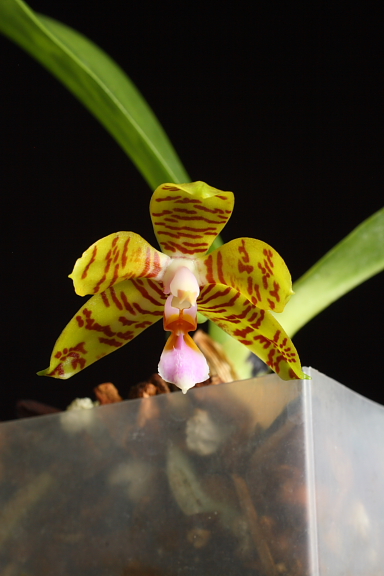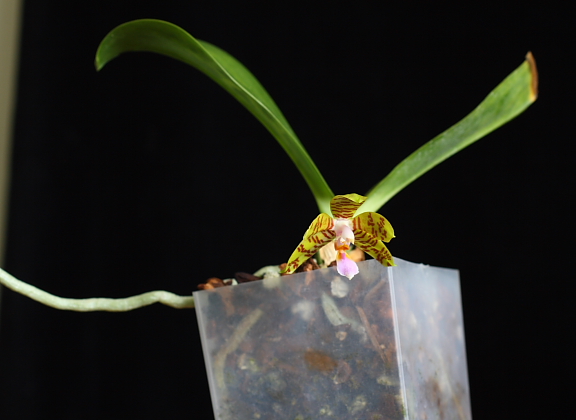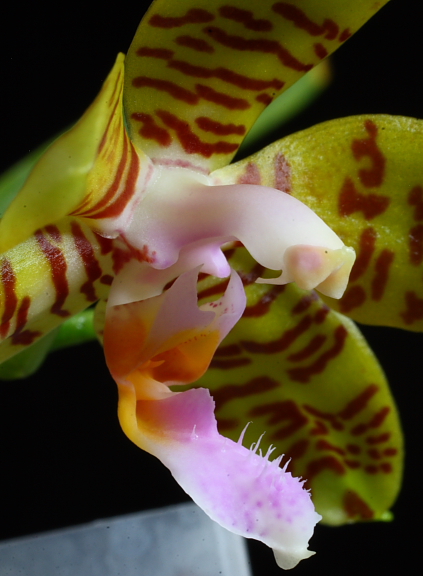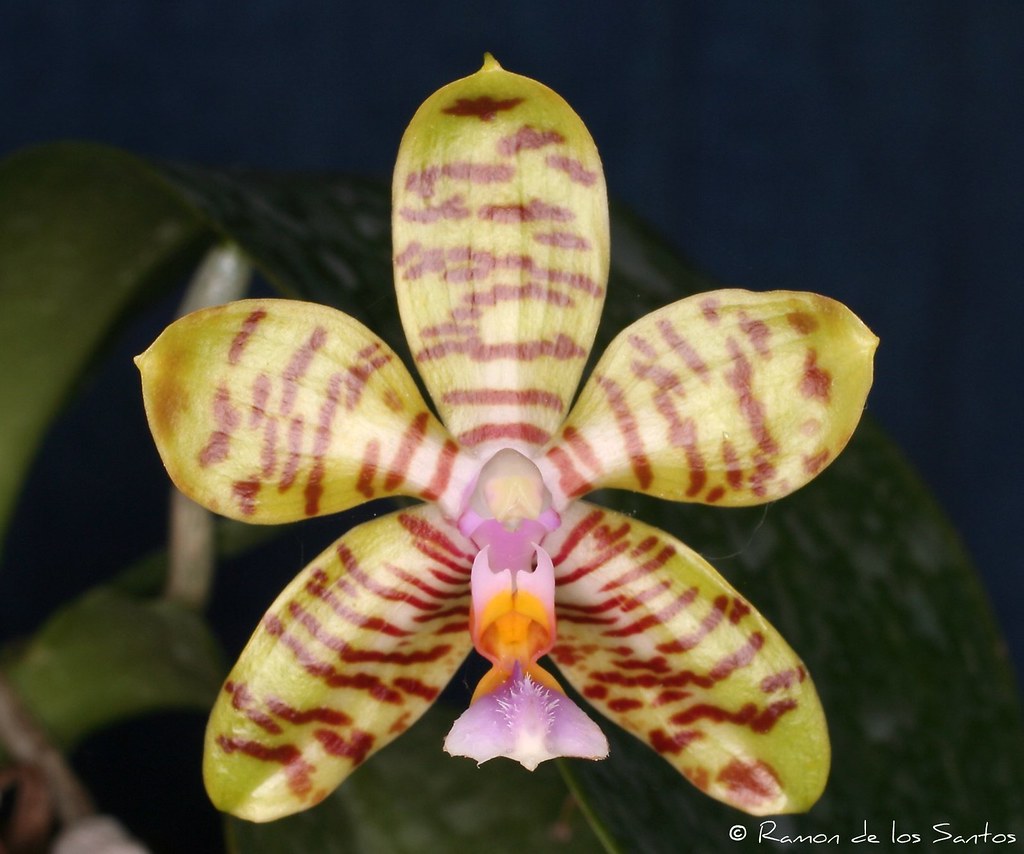phal reichenbachiana 'orchidphile' cbr/aos
this plant is a kind of an enigma. there used to be quite a few plants registered by the rhs as being phal lueddemannia and 'varieties'. each 'variety' would have different offspring if used in hybridizing, and in this case the variety now known as phal fasciata used to be confused with another variety which now has been identified and named as phal reichenbachiana. reichenbachiana wasn't known to be in cultivation for part of the 1900's, then more were found and properly identified. the flowers are very similar in that they have a yellow background and red barring, but often fasciata will have tubular reflexed petals, while reichenbachiana will usually have a slightly cupped flower. often the fasciata will have no trichomes or hairs on the lip (term is called glabrous or smooth), while reichenbachiana will have a collection of trichomes over the midlobe of the lip. it's also reported that fasciata has a 'green apple' fragrance, while reichenbachiana often has more of a musty odor.
I received this plant in a trade and it has stayed about the same size for a number of years. it's finally flowered so I took a picture before the flower had a chance to fall off. if it opens up more, I'll take a better closeup
so I took a picture before the flower had a chance to fall off. if it opens up more, I'll take a better closeup
I received a personal communication from someone who had known the person who first brought phal fasciata into cultivation, and he had stated that fasciata greatly appreciates a small drying-out between waterings and appreciates higher light levels. carrie raven-riemann also told me that both fasciata and reichenbachiana can handle 'harder' environmental conditions, and if they are to survive and flower, they need to have a bit more stress than the normal phal species. both like brighter light, drying out moderately between waterings and some variation in day/night temperatures. since putting this plant closer to the lights and letting it dry more, it has finally flowered! it wasn't looking very happy last year when I was watering it all the time, and then I remembered (doh!) being told to grow it harder.




this plant is a kind of an enigma. there used to be quite a few plants registered by the rhs as being phal lueddemannia and 'varieties'. each 'variety' would have different offspring if used in hybridizing, and in this case the variety now known as phal fasciata used to be confused with another variety which now has been identified and named as phal reichenbachiana. reichenbachiana wasn't known to be in cultivation for part of the 1900's, then more were found and properly identified. the flowers are very similar in that they have a yellow background and red barring, but often fasciata will have tubular reflexed petals, while reichenbachiana will usually have a slightly cupped flower. often the fasciata will have no trichomes or hairs on the lip (term is called glabrous or smooth), while reichenbachiana will have a collection of trichomes over the midlobe of the lip. it's also reported that fasciata has a 'green apple' fragrance, while reichenbachiana often has more of a musty odor.
I received this plant in a trade and it has stayed about the same size for a number of years. it's finally flowered
I received a personal communication from someone who had known the person who first brought phal fasciata into cultivation, and he had stated that fasciata greatly appreciates a small drying-out between waterings and appreciates higher light levels. carrie raven-riemann also told me that both fasciata and reichenbachiana can handle 'harder' environmental conditions, and if they are to survive and flower, they need to have a bit more stress than the normal phal species. both like brighter light, drying out moderately between waterings and some variation in day/night temperatures. since putting this plant closer to the lights and letting it dry more, it has finally flowered! it wasn't looking very happy last year when I was watering it all the time, and then I remembered (doh!) being told to grow it harder.





















































